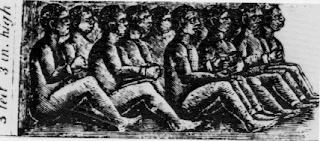
In the study of history I think guilt should be applied to the past with great reservation. We can study events and do our best to learn from them. We can certainly offer our opinion on the morality of issues with the qualification that we come from a different time and are embedded with different social morals then our ancestors. Just as the great-great grandson of a slave owner would not want to be judged in relation to the deeds of his ancestors, we owe that same respect to the past.
How does all this apply to the slave trade? Well, in the case of the slave trade I feel that there are far to many contributors to place the blame on any single one. Often we automatically assume that the slaves are clearly the innocent party, but the slave trade is a little more complex than that. many of the slaves were captured in warfare, and without a doubt had their side won they would have been the one doing the selling. Of course, I do not want to suggest that any slave deserved to be put into a position of servitude, merely I want to suggest that even the slaves were not necessarily innocent victims.
That said I think it is important to study the slave trade without trying to place guilt or blame on any of the participating parties. We can all agree that slavery was a horrible thing, but that again is with the guidance of our current social morality. I do believe however that guilt can be placed on the slave owners, especially in the Americas, for the type of institution that slavery became. I believe this surpasses reservations because slavery was a very different institution at its roots then what it became later on. It was the hideousness of this later slavery that led to the gradual shift from moral acceptance of slavery, to the attempts at equality that define us today.









